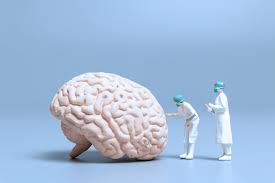
The human brain does not feel pain because it lacks nociceptors, which are specialized nerve receptors that detect harmful stimuli and transmit pain signals. This absence is why neurosurgeons can perform brain surgeries on awake patients without causing them pain, as the brain tissue itself does not have pain receptors .
Pain sensation begins when nociceptors in the skin, muscles, joints, and organs detect potential harm. These receptors send signals through the spinal cord to the brain, where the thalamus relays them to various brain regions, including the somatosensory cortex, which processes the location and intensity of the pain .
Although the brain itself doesn't feel pain, it plays a crucial role in interpreting and responding to pain signals. Headaches, for instance, occur not because the brain tissue is in pain, but due to issues in surrounding structures like blood vessels, muscles, or the meninges, which do contain nociceptors .
This unique characteristic of the brain allows for complex procedures, such as awake brain surgeries, where patients can remain conscious and even communicate with surgeons while their brain tissue is being operated on. The absence of pain receptors in the brain tissue itself is a significant factor in making such procedures possible .
In summary, the human brain does not feel pain due to the lack of nociceptors in its tissue. While it processes and interprets pain signals from other parts of the body, it remains insensitive to direct injury or damage, a feature that facilitates various medical procedures.





 click and follow Indiaherald WhatsApp channel
click and follow Indiaherald WhatsApp channel